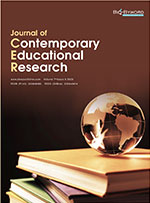Abstract
With the advent of the information age, augmented reality technology can enhance the sense of reality in the virtual world and immerse people in the real and virtual world. People have always been interested in virtual space or augmented reality technology, especially in the face of historical development trends. Museums have always been open to the public, they are not just a collection, but also an exhibition for the public. Through analyzing different museums, it is found that museums with augmented reality technology exhibitions are non-profit museums for the purpose of emotional experience. In order to find out the immersion factors of virtual reality in museums, on the basis of previous research, this paper divides immersion in augmented reality into story immersion, five-sense experience immersion, and spatial interaction immersion. Through the analysis of different museums, it is found that immersion through five-sense experience is the most commonly used method when all display media are included. This method provides educational content for museum visitors and projects virtual presentations through monitors and portable IT devices, thereby increasing visitors’ viewing pleasure.
References
Kwak H, 2007, A Study on Museum Exhibition Directing for Synesthetic Experience, thesis, Hongik University, 5.
Shim S, Kim M, Moon J, 2014, Proceedings of the Korean Society of Interior Design Conference: Characteristics of
Augmented Reality for Museum Immersion, 54–56.
Kim B, 2011, A Study on Experiential Exhibition Environment for Improving Museum Communication: Focusing on
Folk Museum Cases, thesis, Hongik University, 59.
Yoon H, 2010, A Study on Exhibition Communication in Natural Science Museums, thesis, Chung-Ang University.
Song K, 2009, A Study on Optimization of Directing for Improving Exhibition Communication Effects at Natural
History Museum, Korea Design Forum, 2009(25).
Kim J, Kim H, Park S, et al., 2006, Augmented Reality Technology Trend, http://kidbs.itfind.or.kr/WZIN/
jugidong/892
Kobayashi A, 2011, Easy-to-Understand Augmented Reality [Lee J, Trans.], Biz Books, 33.
Kim G, 2010, A Study on the Efficient Expression Method of Information Design Using Augmented Reality (AR).
Basic Art Studies, 11(5).
